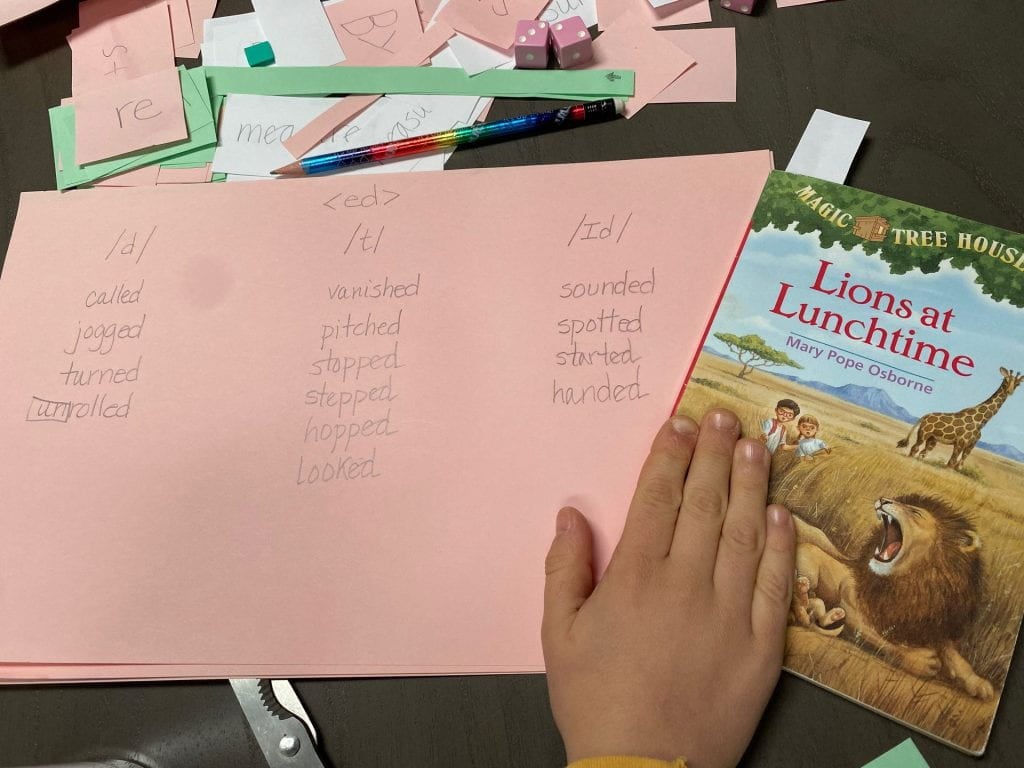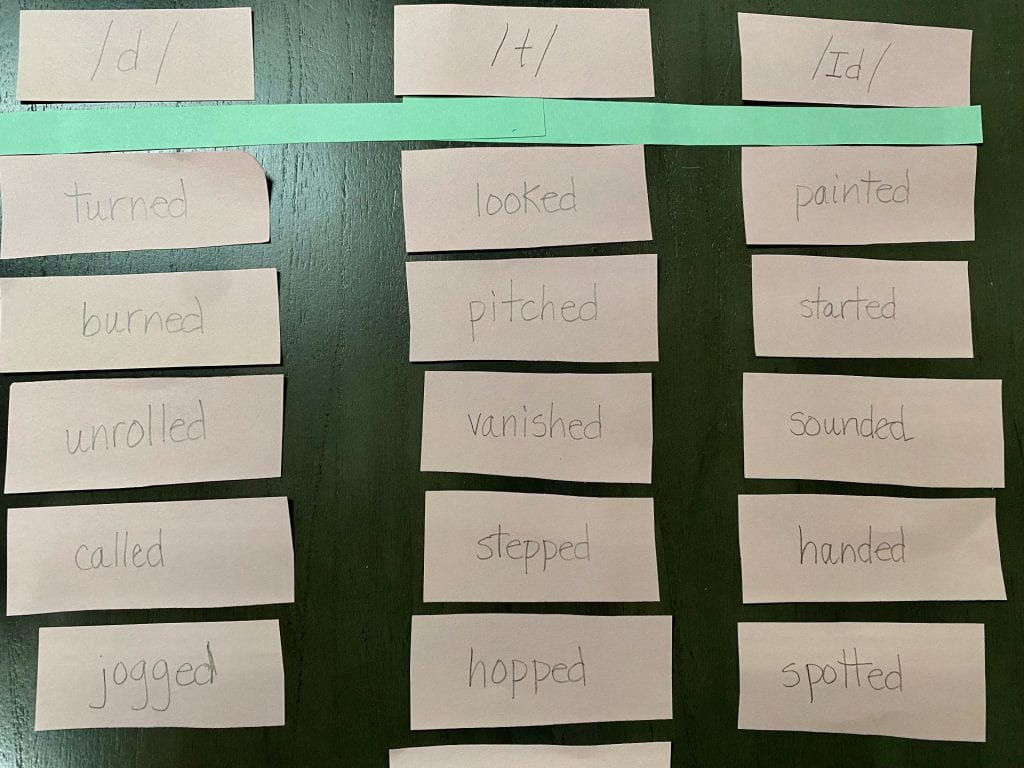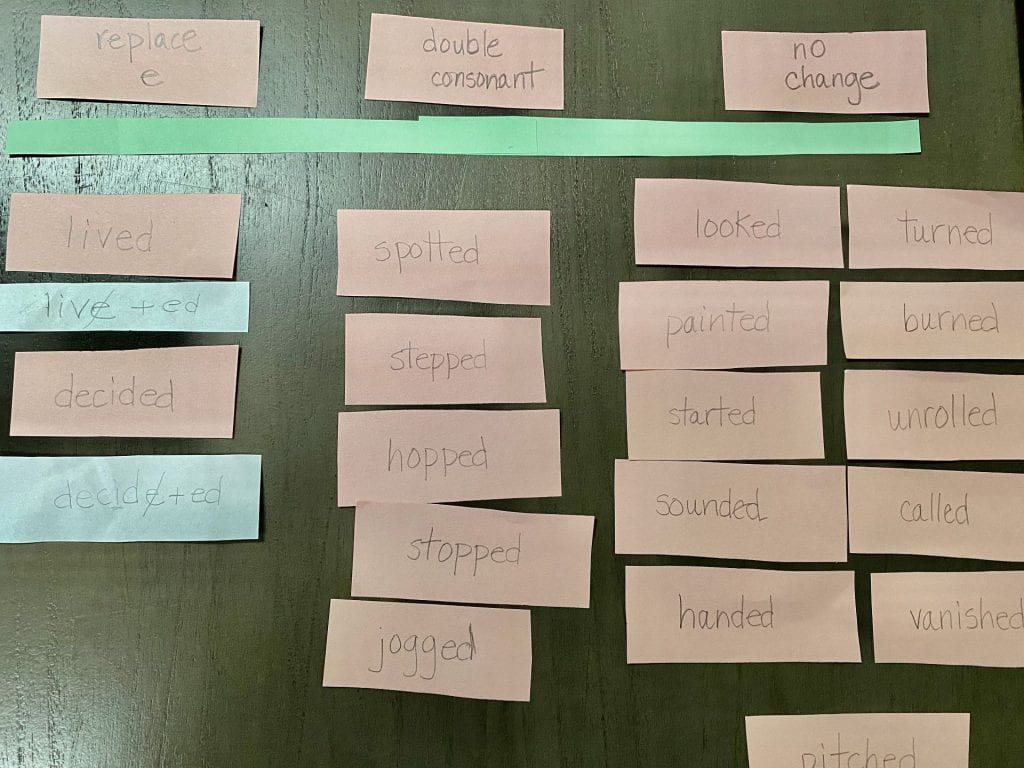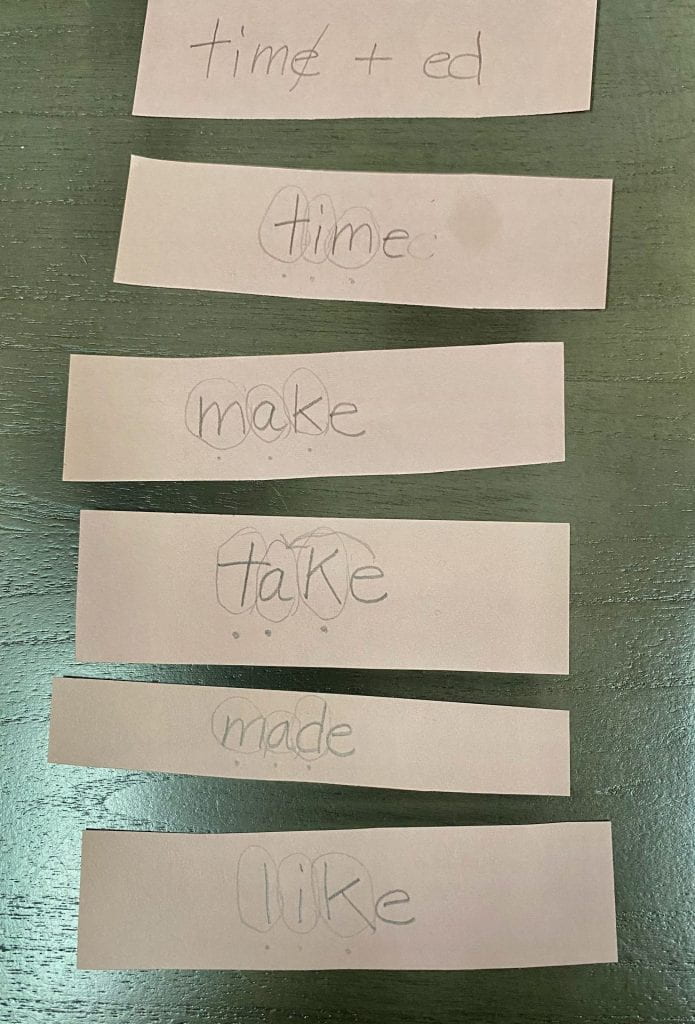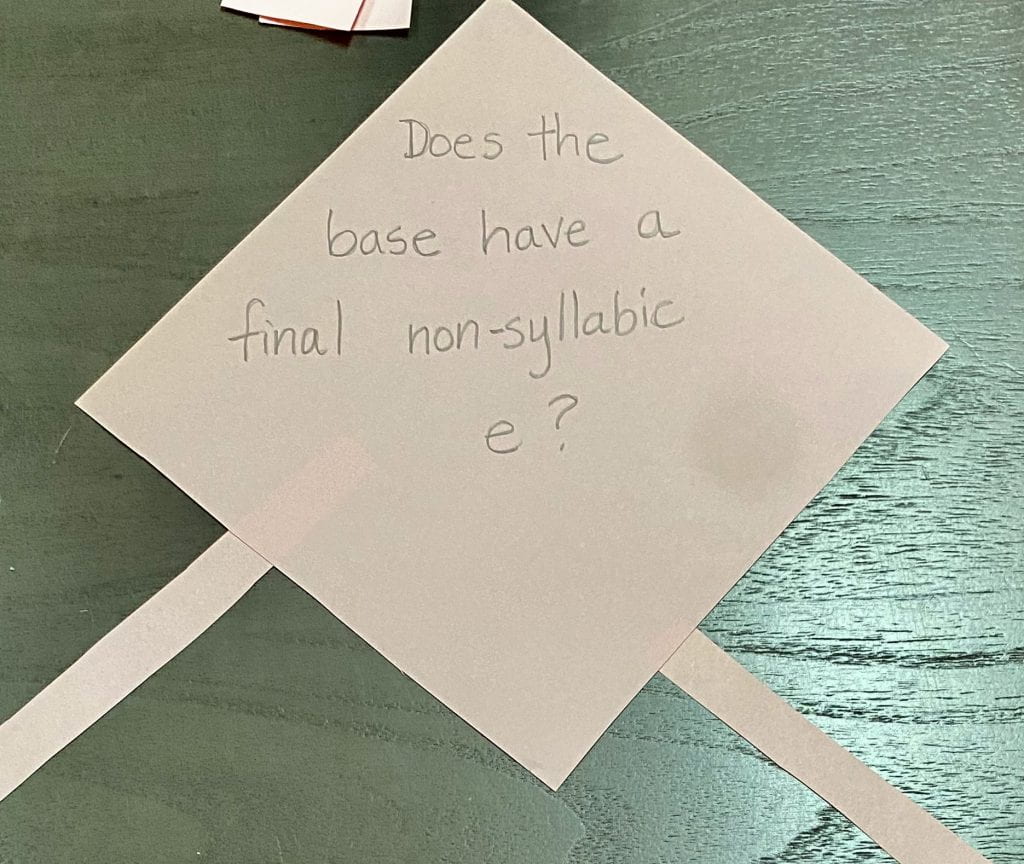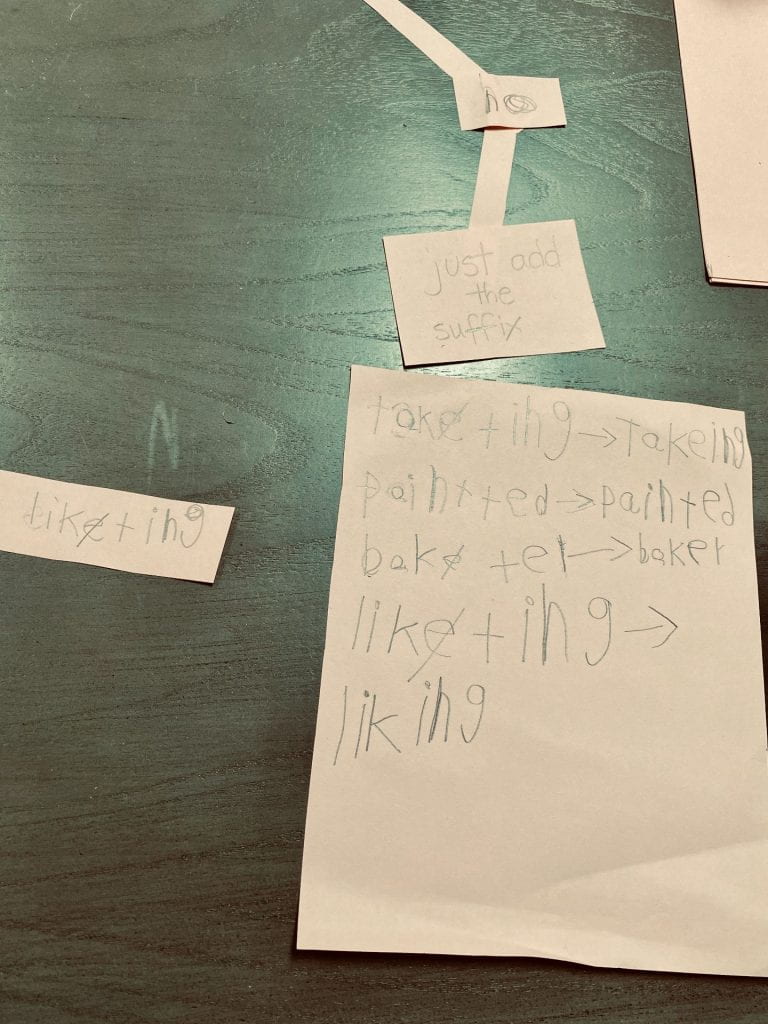Last week, my student brought a book with him. He wanted to read a chapter aloud to me. As he was reading, I noticed that he was hesitating at words like ‘started’ and ‘handed.’ When I had him cover up the <ed> suffix in those words, he quickly recognized the word and continued reading. After the fourth or so time this happened, I said, “There sure are a lot of words with the <ed> suffix in this chapter! Keep your eye out for them when you come to a word that doesn’t look familiar.”
At the end of the chapter we went back to the beginning to skim through it again, looking for words with an <ed> suffix. We found all of the words pictured below on only two pages! I made a chart with three columns, representing the different ways we pronounce <ed> when we read it in words. When we spotted one, Michael read it and told me which column it belonged in. I remarked that this book was a goldmine when it came to finding words with an <ed> suffix!
One of the words he was not familiar with was ‘sounded.’ We talked about the <ou> digraph and how it is pronounced similarly in ‘ouch’ and ‘loud,’ but not in ‘soup’ and ‘group.’ Whenever we needed to, we went grapheme by grapheme to pronounce the word.
Today when Michael came, I had written the same words on separate pieces of paper and asked him to sort them by pronunciation of the <ed> suffix. I wanted to review this important concept with him before we moved on. He read the words and slid them into the appropriate column. When needed he covered the suffix as a strategy for recognizing the base.
Next, I switched the column headings and said we would be sorting the same words in a different way. I wanted him to notice which words had a doubled consonant just before the <ed> suffix, which had needed to replace the base’s final <e>, and which simply added the <ed> to the base.
The majority of the words were composed of a base and the <ed> suffix — with no change to the base. The rest of the words in our batch had doubled consonants just before the suffix. I had him cover the <ed> and then we talked about how to spell the base. Was ‘stop’ spelled with one <p> or two? He wanted to include both ‘unrolled’ and ‘called’ in this column. I thanked him for noticing those, but pointed out that the <l> is doubled in both of those bases. Adding the vowel suffix did not cause the doubling as it does in ‘stopped.’
None of the words in our group had a base with a single, final, non-syllabic <e>, so I grabbed a book we read earlier and we looked for a few. We found ‘lived’ and ‘decided.’ I wrote word sums so he could see what I meant about the final <e> needing to be replaced.
I wrote a few more examples of words with that single, final, non-syllabic <e> and we talked about the reason for that <e>. Michael said, “It’s a silent <e>.”
I said, “Yes. It does not represent sound. That is not its job in this word. It has a different job. Let’s look at what that job is.” We circled the graphemes and noticed that in the following words, that final <e> was influencing the pronunciation of the previous vowel. It’s one of the jobs that <e> can do.
Then we went back to look at ‘live.’ I told Michael that when the word is being used as a verb (action word – I live in Wisconsin), the <e> is preventing the word from ending in <v>. It is not having an effect on the <i>. We know this because of the short pronunciation of the <i>. But when the word is being used as an adjective (describing word – Be careful of the live wire), the <e> is preventing the word from ending in <v> and also influencing the pronunciation of the <i>. It is doing double duty!
We practiced tapping out these words.
Next I showed Michael a video about the suffixing convention in which that single, final, non-syllabic <e> might need to be replaced.
After we watched that, I showed him another video. I’m sure we’ll be watching these again, but I thought hearing the information from other students might hold his interest.
Now it was time to build our own flow chart and practice using it. We thought back to the Affix Squad video to figure out what would be the most important question to ask. I reviewed the meanings of words like ‘base’ and ‘non-syllabic’ before we proceeded. Next we knew that the answer to that question would either be yes or no. I asked Michael to write those words for our flow chart. I wrote the final directions that would follow either the yes or the no.
We practiced using the word sum <jump + ed>. Then I got my video camera out and we practiced using the flow chart. Rather quickly, Michael took over with using the flow chart. He also gained both confidence at writing word sums and practice at reading the word sums.
Since we had been focusing on the <ed> suffix (and a few other vowel suffixes), we used this flow chart to help solidify what to do when adding a vowel suffix to a base with a single, final, non-syllabic <e>. Next time we’ll talk about how to alter our flow chart to include adding consonant suffixes as well. What kinds of changes will we need to make to our flow chart? I’m looking forward to hearing what my student suggests!
Michael was really engaged with this activity. I think the fact that we made our own version of the flow chart and then used it to accurately spell words drew him in. In the video you can see where he explained that the <ing> suffix would be replacing the final <e> on <take>. But then when writing the completed word, he still included the <e>. When I pointed it out, he laughed. He erased the <e> (not very well) and we moved on. I gave him a base without a final <e> next. When we came back to words like to <bake + er> and <like + ing>, it was evident he understand what replacing the final <e> really meant. It is really rewarding to see the understanding grow week to week!

